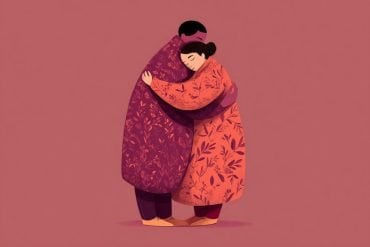Summary: A study revealed that both men and women with greater upper body strength report more lifetime sexual partners, challenging the sexual selection hypothesis, which emphasizes male physical competition for mates.
While men’s strength is often linked to evolutionary advantages like hunting and mate competition, the findings also suggest stronger men are more likely to be in long-term relationships, supporting the “provisioning” theory.
Women’s upper body strength, surprisingly, correlated with higher partner counts, though the reasons remain unclear, with theories including assortative mating or reduced dependency on male support.
Key Facts:
- Cross-Gender Pattern: Stronger men and women both report more lifetime sexual partners, defying traditional evolutionary assumptions.
- Provisioning Theory: Stronger men may have been better long-term partners, supporting families through hunting.
- Unexplained Link: Women’s strength correlates with partner count, but the evolutionary basis requires further study.
Source: Washington State University
While many studies have looked at possible evolutionary links between men’s strength and sexual behavior, a Washington State University study included data on women with a surprising result. Women, as well as men, who had greater upper body strength tended to have more lifetime sexual partners compared to their peers.
The study, published in the journal Evolution and Human Behavior, was designed to test evolutionary theories for human sexual dimorphism—namely that in early human history there was likely a reproductive advantage selecting for men’s greater upper body strength.
Another finding in this study did hint at a reason for that physical difference: men with greater upper body strength were also more likely to to be in long-term relationships.
“People have assumptions about men’s sexual behavior and how that’s related to evolution. Besides acquiring more sexual partners, establishing long-term relationships was likely also important for men in evolutionary history,” said lead author Caroline Smith, a recent WSU Ph.D. graduate in anthropology.
For this study, Smith and her advising professor, WSU evolutionary anthropologist Ed Hagen, analyzed data on 4,316 U.S. adults from 2013-2014 from the National Health and Nutrition Examination Survey conducted by the Centers for Disease Control and Prevention.
They primarily used grip strength, a common measure to approximate upper body strength, and compared it to participants’ survey responses about their sexual behavior.
The findings present a mixed picture, the authors said.
There are several hypotheses around why men have greater upper body strength. One popular theory, known as the sexual selection hypothesis, is based on competition: that like other primates, human males competed against each other for access to mates so needed to be physically formidable to pass their genes on.
This theory predicts little relationship between women’s strength and their mating success.
“Men are stronger than women, on average, and men report more lifetime partners than women, but men and women are on the same regression line,” said Hagen.
“Regardless of whether they’re males or females, stronger individuals have more lifetime sexual partners. That was a surprising finding and somewhat contrary to the sexual selection hypothesis.”
On the other hand, this study’s finding about long-term partners seems to support another theory based on “provisioning.”
Since human babies require a lot of care and resources, particularly from women during pregnancy and lactation, men were more desirable as partners when they could provide meat through hunting, which for hundreds of thousands of years before the modern era required upper body strength.
The stronger human males, who also stuck around and helped provide more food resources to those children as they grew, also would better ensure their survival.
While there are theories for men’s strength in relation to reproductive success, there are not so many for women’s strength, in part because women are not often included in these types of studies.
There was not an obvious explanation in this study’s data why women with greater upper body strength also had greater number of lifetime partners. The researchers controlled for many variables, including general health and testosterone levels, but the connection still held.
They did cite a few potential theories, including that it is due to “assortative mating,” meaning physically stronger people tend to partner with each other more frequently. It could also be that women who are physically stronger require less male investment or feel like they can take more risks.
Ultimately, more studies involving women would be needed to uncover more evidence for the reasons behind this connection as well as a better understanding of human evolution in general.
“I believe it’s important to continually test our theories, especially by expanding our research questions to include women,” said Smith.
About this relationship and evolutionary neuroscience research news
Author: William Ferguson
Source: Washington State University
Contact: William Ferguson – Washington State University
Image: The image is credited to Neuroscience News
Original Research: Closed access.
“Strength, mating success, and immune and nutritional costs in a population sample of US women and men: A registered report” by Ed Hagen et al. Evolution and Human Behavior
Abstract
Strength, mating success, and immune and nutritional costs in a population sample of US women and men: A registered report
Theory and evidence suggest that the mating benefits of muscle mass in human males trade off with costs of increased energy intake and decreased measures of innate immunity, likely due to an evolutionary history of sexual selection.
Lassek and Gaulin (2009) demonstrated a positive association between male fat-free mass and limb muscle volume and mating success but did not investigate women. It is therefore unknown if females experience a similar tradeoff.
Using data from the 2013–2014 phase of the National Health and Nutrition Examination Survey (NHANES), a large nationally representative sample of US adults (N = 4316), we tested the prediction from the sexual selection hypothesis that the association of upper-body strength, proxied by grip strength, with mating success is significantly positive for males and significantly less so for females.
We found a main effect of strength on mating success proxied by lifetime number of sexual partners and current partnered status, but not past-year number of sexual partners or age at first intercourse.
We found consistent evidence for a grip strength X sex interaction on partnered status, such that strength was significantly more important for male partnered status than female (but no significant interaction for lifetime sexual partners).
We also tested for tradeoffs of upper-body strength with immune and dietary intake and found a positive relationship between grip strength and protein and energy intake, but no significant relationship between grip strength and innate immune function.
Our results suggest that sexually dimorphic upper-body strength might have evolved, in part, by increasing male long-term mating success.







